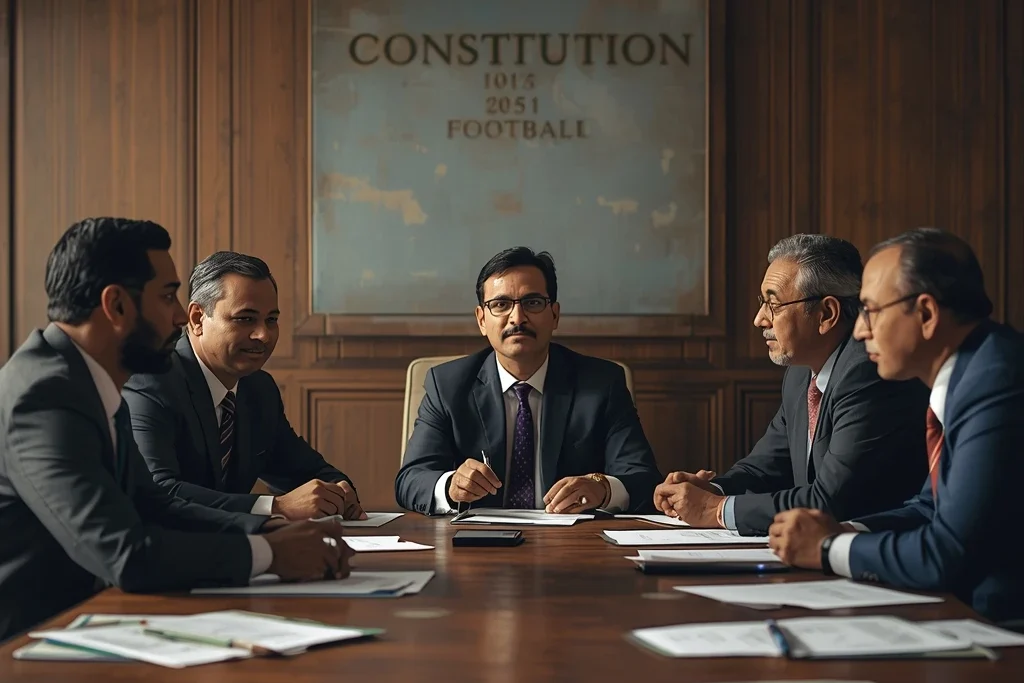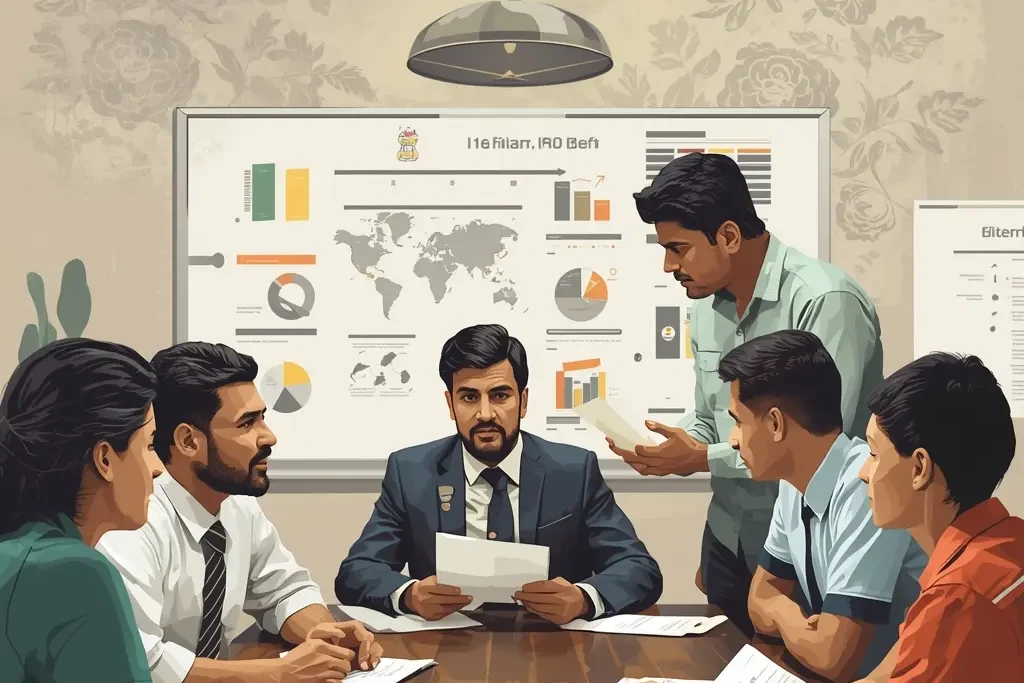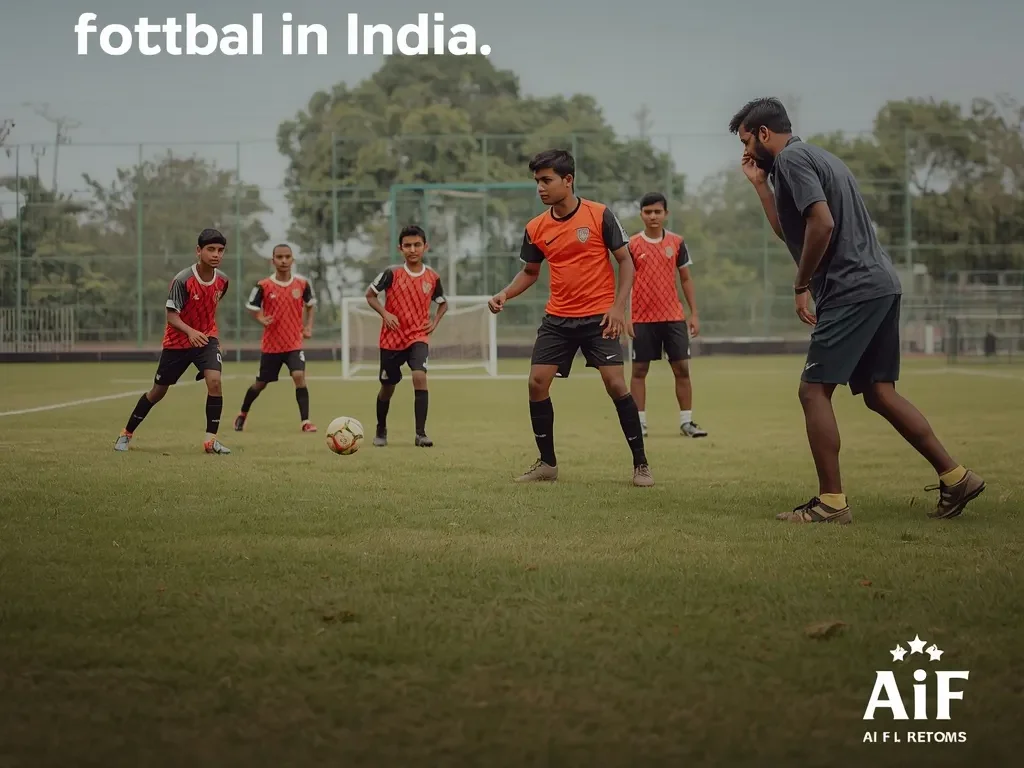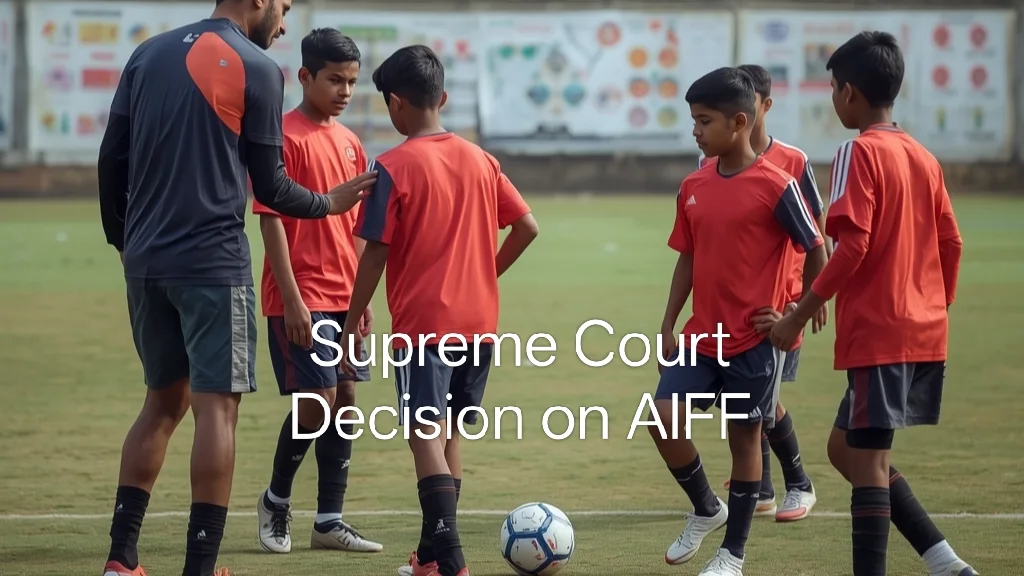Introduction
Indian football has been in the spotlight for many reasons over the past few years, ranging from governance disputes to international performance and structural reforms. One of the most significant developments in recent times has been the approval of the draft constitution of the All India Football Federation by the Supreme Court of India. The move is being seen as a turning point in Indian football governance, and it has sparked widespread discussions about how the future of the sport will evolve in the country. With the Supreme Court on AIFF matters becoming decisive, the legal intervention aims to bring accountability, fairness, and stronger representation within the federation.
This article takes a comprehensive look at the background, the decision, and its implications by exploring some of the most common queries that football enthusiasts, players, and stakeholders have raised.
What is the new draft constitution of the All India Football Federation (AIFF)?

The new draft constitution of the All India Football Federation is essentially a roadmap for how the body will function in terms of governance, elections, and representation. For years, the AIFF had been under scrutiny for internal irregularities, lack of transparency, and disputes over office-bearers exceeding their terms. With the Supreme Court on AIFF matters intervening, the draft constitution was prepared in consultation with stakeholders, experts, and even representatives from FIFA and the Asian Football Confederation.
The AIFF draft constitution approval ensures that there are clear term limits for office-bearers, transparent election procedures, and stronger representation for players. This is a major step in football federation reforms because it balances administrative powers with the needs of players and clubs. The new rules are expected to align Indian football governance with international standards, preventing conflicts and giving stakeholders a more democratic voice.
Also Read– Top 10 Shocking Common Misconceptions About Indian Law
Why did the Supreme Court approve the AIFF constitution?
The Supreme Court’s involvement was not incidental; it became necessary because of long-standing disputes within the AIFF and the absence of credible governance mechanisms. In fact, the SC decision on AIFF matters was preceded by years of court cases, appeals, and even warnings from FIFA about potential suspension due to interference and irregularities.
The Supreme Court approved the draft constitution because it ensured compliance with both Indian law and international football regulations. It emphasized the need for free and fair elections, term restrictions for officials, and a balanced representation of different groups within the federation. In short, the approval was not just about legal technicalities but about safeguarding the credibility of Indian football governance.
| Reason | Short Explanation |
|---|---|
| Compliance | Followed Supreme Court’s reform directives. |
| Governance | Balanced power between states and players. |
| Elections | Transparent and fair process ensured. |
| Limits | Age and tenure caps stopped monopolies. |
| Accountability | Stronger financial audits and checks. |
| Inclusivity | Focus on grassroots and gender representation. |
This decision also ensures that the federation will operate with greater transparency and accountability. The AIFF draft constitution approval is therefore a corrective measure that hopes to prevent future crises and align the federation with global governance practices.
How will the AIFF draft constitution impact Indian football governance?
The impact of the draft constitution on Indian football governance is expected to be far-reaching. By limiting the tenure of top officials and creating clear electoral procedures, it ensures that power is not concentrated in the hands of a few. For decades, governance in the federation had been criticized as stagnant, with little scope for reform. Now, with football federation reforms taking center stage, new leadership can emerge periodically, fostering fresh ideas.
Another major change is the emphasis on players’ representation. In the past, former footballers had little say in how the AIFF functioned, but the new rules make it mandatory to include them in decision-making processes. This aligns with global practices where athletes’ voices are respected in governance. Moreover, clubs and state associations will now have structured roles, reducing ambiguity.
The SC decision on AIFF reforms also indirectly impacts grassroots development. When governance is streamlined, resources can be better allocated to infrastructure, youth development, and women’s football. Thus, the draft constitution doesn’t just change administrative rules but also sets the tone for the holistic growth of football in India.
What changes are included in the AIFF draft constitution?
Several important changes have been embedded in the draft constitution, marking a significant step in football federation reforms. First, term limits have been strictly defined. No office-bearer can continue indefinitely, which prevents the formation of power monopolies. Second, there is greater representation of players, ensuring that their experiences and needs are incorporated into policy-making.
Third, the election process is now more transparent. The constitution provides clear guidelines on how elections should be conducted, minimizing disputes. Fourth, the draft includes compliance clauses to ensure that Indian football governance stays aligned with FIFA and AFC regulations. Any deviation could result in international sanctions, so this alignment is critical.
Here’s an 80-word list of key changes included in the AIFF draft constitution:
- Implementation of Supreme Court directives
- Reduction of state association dominance
- Inclusion of eminent players in governance
- Age cap for officials (70 years)
- Term limit of 12 years maximum
- One-state, one-vote principle
- Transparent election process under SC guidelines
- Clear definition of roles and responsibilities
- Stronger focus on grassroots football
- Enhanced gender representation
- Professional audit and compliance rules
- Accountability in financial management
Additionally, the draft emphasizes accountability in financial management. For years, financial irregularities have plagued the federation, but with stricter checks and balances, the chances of mismanagement are reduced. The Supreme Court on AIFF has clearly highlighted that these reforms are not just cosmetic but aimed at ensuring structural stability.
Who will manage elections under the new AIFF constitution?

Elections under the new AIFF constitution will be managed by an independent committee to ensure neutrality and transparency. Earlier, election disputes had often led to prolonged delays, internal conflicts, and even judicial interventions. With the AIFF draft constitution approval, the role of the election committee has been clearly defined.
The committee will be responsible for announcing election dates, verifying eligibility, and conducting the process in a fair manner. This step is essential for restoring trust among stakeholders, many of whom had expressed dissatisfaction with previous elections. The SC decision on AIFF elections emphasizes that independence and fairness are crucial for credibility.
This independent mechanism also brings Indian football governance closer to international practices, where independent bodies often oversee sports elections. The idea is that administrators should not be referees in their own games, thereby eliminating conflicts of interest.
How does the AIFF constitution affect Indian football players and clubs?

The AIFF draft constitution has significant implications for both players and clubs. For players, it introduces mandatory representation, giving them a stronger voice in how the game is managed. This is a breakthrough because for too long, footballers had limited involvement in administrative decisions. Now, their perspectives on training, infrastructure, and international exposure will shape policy.
For clubs, the constitution offers clarity on their role within the federation. Earlier, state associations had disproportionate power, often sidelining clubs. But football federation reforms have now ensured a balance between state associations, clubs, and players. This could lead to better coordination in organizing leagues, tournaments, and grassroots programs.
Here’s a concise table version for quick reference:
| Aspect | Effect on Players & Clubs |
|---|---|
| Representation | Players have a voice; clubs follow democratic policies |
| Governance & Elections | Transparent and fair management benefits all |
| Leadership Limits | Fresh ideas from new officials |
| Grassroots Focus | Better training, more talent opportunities |
| Financial Accountability | Secure contracts and payments; clubs face audits |
| Inclusivity | More opportunities for women players and clubs |
The SC decision on AIFF reforms also opens opportunities for women’s football. With more inclusive policies and stronger governance, women players and clubs can expect more structured support. Overall, the constitution empowers stakeholders, ensuring that Indian football governance moves towards inclusivity and progress.
Wider Implications of the Supreme Court on AIFF
The Supreme Court’s role in this case is symbolic of a broader trend where judicial interventions are necessary to correct governance lapses in sports bodies. The AIFF draft constitution approval highlights that sports governance cannot remain outside the purview of accountability. By stepping in, the judiciary has not only corrected AIFF’s course but also sent a strong message to other sports federations in India that transparency is non-negotiable.
Football federation reforms in India will also boost confidence among international partners, sponsors, and investors. When governance structures are robust, financial stakeholders are more likely to invest in leagues, academies, and infrastructure. This could mark a new era for Indian football, where professionalism and accountability go hand in hand.
Challenges Ahead
Despite the SC decision on AIFF and the approval of the draft constitution, challenges remain. Implementing the reforms is easier said than done. Resistance from entrenched interests is likely, as many individuals may be unwilling to relinquish long-held power. There is also the practical difficulty of balancing the roles of state associations and clubs, as both have different priorities.
Another challenge lies in ensuring consistent compliance with FIFA regulations. While the constitution has been approved, ongoing monitoring will be required to ensure that governance does not slip back into old habits. Furthermore, building trust among players, clubs, and fans will take time. Mere legal approval will not transform the culture; it will require consistent effort, leadership, and accountability.
FAQs of All India football federation
1. What is the issue between AIFF and FSDL?
Dispute over league management, revenue sharing, and governance rights in Indian football’s professional structure.
2. Is the Supreme Court verdict final?
Yes, the Supreme Court’s approval of the AIFF constitution is binding and final.
3. What went wrong with Indian football?
Poor governance, lack of transparency, and limited grassroots development hindered growth and professionalization.
4. Latest Supreme Court on AIFF
SC approved AIFF’s draft constitution, enforcing reforms, elections, and accountability measures.
5. Is it affect football players?
Yes, reforms ensure players’ representation, better governance, and improved opportunities in Indian football.
Conclusion
The approval of the draft constitution of the All India Football Federation by the Supreme Court is a landmark moment in Indian football governance. It marks a decisive step toward transparency, inclusivity, and professionalism. By addressing long-standing disputes, clarifying election processes, and giving players a stronger role, the AIFF draft constitution approval has laid the foundation for football federation reforms that can truly transform the game.
While challenges remain, the SC decision on AIFF matters has set a precedent that governance in Indian sports must evolve with the times. For footballers, clubs, and fans, this is an opportunity to look forward to a future where the sport is managed with fairness, accountability, and a genuine commitment to growth. If implemented effectively, these reforms can not only strengthen the federation but also uplift Indian football on the global stage.
Further Readings:
- Waqf Bill Supreme Court Judgement 2025
- Supreme Court Endorses coal India’s Dual Pricing Policy
- Supreme Court Notice on EWS Treatment
- Supreme Court Judgment Transforms Mumbai & Pune Real Estate


Having read this I thought it was very informative. I appreciate you taking the time and effort to put this article together. I once again find myself spending way to much time both reading and commenting. But so what, it was still worth it!
I couldn’t resist commenting
Somebody necessarily assist to make seriously posts I would state. That is the first time I frequented your web page and to this point? I surprised with the research you made to make this particular submit extraordinary. Magnificent process!
An impressive share, I just given this onto a colleague who was doing a little analysis on this. And he in fact bought me breakfast because I found it for him.. smile. So let me reword that: Thnx for the treat! But yeah Thnkx for spending the time to discuss this, I feel strongly about it and love reading more on this topic. If possible, as you become expertise, would you mind updating your blog with more details? It is highly helpful for me. Big thumb up for this blog post!
I am curious to find out what blog platform you happen to be using? I’m experiencing some minor security problems with my latest site and I would like to find something more safe. Do you have any solutions?